EPA Ozone Non-Compliance Big Problem for Development
EPA Ozone Non-Compliance Big Problem for Development
NAIOP Wisconsin Public Policy Alert
SE Wisconsin Ozone Non-Compliance a Big Problem
The U.S. Environmental Protection Agency (EPA) has officially reclassified Southeast Wisconsin as a Serious Nonattainment Area for ozone pollution. This designation, effective January 2025, imposes new regulatory burdens on industrial operations, significantly impacting existing tenants, new developments, and future leasing activity.
Despite Wisconsin’s emissions steadily decreasing, the ozone issue is exacerbated by transported pollution from upwind states (primarily Illinois and Indiana). This places an unfair regulatory burden on businesses in Wisconsin, creating an artificial barrier to industrial growth that does not reflect the true sources of pollution
How This Could Affect Industrial Tenants and Future Leasing
The new Serious classification introduces stricter emissions thresholds and more costly regulatory compliance for industrial tenants. This will likely result in:
Increased Permitting and Compliance Costs
The threshold for being classified as a major source of NOx or VOC emissions has dropped from 100 tons per year to 50 tons per year.
Many industrial tenants—including manufacturers, logistics operators, printing facilities, metal fabricators, and food processors—may now be required to obtain Title V operating permits, significantly increasing compliance costs and administrative burdens.
Extended Permitting Timelines
New Source Review (NSR) permits for major sources or modifications will now require rigorous environmental analysis, leading to longer review periods.
Alternative site analysis requirements for new or expanding businesses may extend project timelines by 12 months or more.
Facilities newly classified as major sources will have 12 months to apply for a Title V permit, unless the WDNR mandates an earlier deadline.
Higher Operating Costs for Industrial Occupiers
Businesses will need to invest in costly emissions control technology to comply with lower NOx and VOC limits—potentially costing millions per facility.
Emission offsets are now mandatory for new developments, requiring businesses to purchase pollution credits at a higher and increasingly expensive ratio.
Compliance reporting will demand additional staff, environmental monitoring equipment, and legal support, raising operational expenses.
Is This Problem Unique to Southeast Wisconsin?
Yes. Southeast Wisconsin is uniquely impacted by the EPA’s regulatory framework for several reasons:
Ozone formation in this region is a riparian phenomenon – Emissions from Illinois and Indiana interact over Lake Michigan, forming ozone that is then pushed inland. Wisconsin businesses are being penalized for pollution they did not create.
Other states facing similar challenges have secured exemptions or delayed enforcement. Wisconsin must aggressively advocate for equitable treatment.
The Chicago region has successfully challenged nonattainment areas in the past, shifting the regulatory burden onto Wisconsin businesses instead.
Unless challenged, this designation will persist and worsen, potentially leading to a "Severe" classification by 2027—further reducing competitiveness.
The Cost of Compliance
The financial burden of this designation extends beyond permitting delays:
Title V Operating Permits – Required for more businesses, with costs significantly higher than state-level permits.
Emission Control Technology Upgrades – Investment in advanced controls could cost millions per facility.
Emission Offsets – Required for new or expanding businesses, at a higher ratio (1.15:1 to 1.2:1), with limited availability and rising costs.
Compliance & Reporting – Increased monitoring, recordkeeping, and reporting requirements will add labor and operational expenses.
For many industrial tenants, these increased costs could lead to downsizing, relocation, or deferred expansion plans—directly impacting occupancy rates and industrial real estate valuations.
The Path Forward: Easing the EPA Burden
A coordinated strategy is necessary to protect Wisconsin’s industrial real estate market and ensure that existing tenants and future developments are not unfairly penalized.
Regulatory & Legal Challenges
File Section 126 petitions forcing upwind states to reduce emissions before Wisconsin is penalized.
Challenge the EPA’s methodology in federal court, arguing that Southeast Wisconsin should not be classified as a major pollution contributor.
Oppose future “Severe” classification efforts that would further tighten regulations.
Legislative & Policy Advocacy
Advocate for Congressional amendments to the Clean Air Act that account for transported pollution.
Push for statewide emissions trading programs to lower compliance costs for industrial tenants.
Work with Wisconsin’s federal delegation to delay compliance deadlines for impacted businesses.
Industry Mobilization & Business Coalition Formation
Bring trade groups, manufacturers, developers, and policymakers together to challenge the EPA’s ruling.
Engage in media campaigns, legal filings, and direct advocacy to demonstrate the negative economic impact of these rules.
Call to Action
We urge Wisconsin’s largest industrial real estate developers and landlords to:
✅ Engage in the legal and policy fight – Support industry coalitions pushing back against unfair regulations.
✅ Educate tenants and stakeholders – Inform businesses about compliance risks and the potential impact on leasing activity.
✅ Invest in economic impact studies to quantify the costs and present compelling data for regulatory reform.
The future competitiveness of Southeast Wisconsin’s industrial sector depends on immediate action. By leveraging legal, legislative, and industry-driven strategies, we can mitigate the impact of the nonattainment classification and ensure that Wisconsin remains an attractive location for industrial investment.
Contact Jim Villa to discuss how you can get involved!
